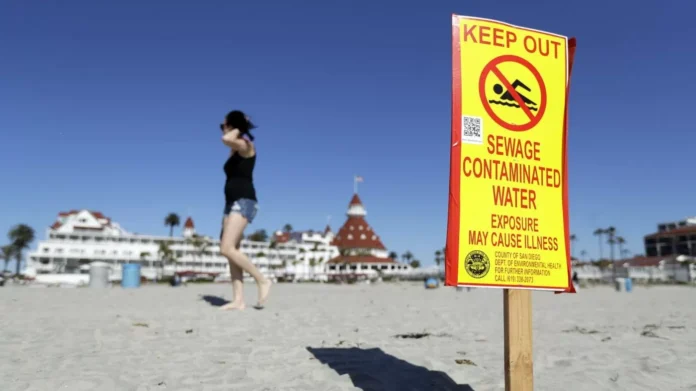The Tijuana River, a cross-border waterway originating in Mexico’s Baja California, has been causing major concerns for Southern California’s beaches and surrounding communities. A recent study has revealed that the unfettered flow of wastewater from the Tijuana River not only poses a threat to the beaches, but it has also unleashed alarming amounts of toxic gas in the area.
The gas in question is hydrogen sulfide, also known as “sewer gas” due to its unpleasant smell. This gas is a byproduct of the breakdown of organic matter in sewage, and it can have serious health effects when present in high concentrations. The study, conducted by researchers at San Diego State University, found that the levels of hydrogen sulfide in the air near the Tijuana River were significantly higher than the recommended safety limits.
This discovery has raised concerns among local residents and environmental groups, who have been advocating for stricter measures to address the issue. The Tijuana River has long been a source of pollution, with sewage and trash regularly flowing into the river from both sides of the border. However, the recent findings have shed light on the additional danger posed by the release of toxic gas into the air.
The effects of this toxic gas are not limited to the immediate vicinity of the Tijuana River. The study found that the gas can travel several miles inland, affecting communities in the surrounding areas. This is a cause for great concern, as the affected communities are home to thousands of people, including children and the elderly, who are more vulnerable to the health risks associated with hydrogen sulfide exposure.
The study also revealed that the levels of hydrogen sulfide in the air were particularly high during the summer months, when the flow of wastewater from the Tijuana River increases due to heavy rains. This means that the problem is not going away on its own and requires urgent attention from both the Mexican and US governments.
The issue of pollution in the Tijuana River is not a new one, and efforts have been made in the past to address it. However, these efforts have not been enough to prevent the continuous flow of wastewater and the resulting toxic gas emissions. It is clear that more needs to be done to tackle this problem effectively.
One solution that has been proposed is the construction of a wastewater treatment plant on the Mexican side of the border. This would help to prevent the untreated sewage from flowing into the Tijuana River and ultimately the Pacific Ocean. However, the construction of such a plant requires a significant investment of resources and cooperation between the two countries.
In the meantime, local authorities have taken steps to mitigate the effects of the toxic gas emissions. Air quality monitoring stations have been set up in the affected communities, and residents have been advised to limit their outdoor activities when the levels of hydrogen sulfide are high. However, these measures can only do so much, and a long-term solution is needed to address the root cause of the problem.
It is crucial that the governments of Mexico and the US work together to find a sustainable solution to the pollution in the Tijuana River. The health and well-being of the communities in the surrounding areas, as well as the marine life in the Pacific Ocean, depend on it. The recent study has brought to light the severity of the situation and the urgent need for action.
In the face of this alarming news, it is important to remain positive and hopeful. The study has provided us with valuable information that can help guide the efforts to address this issue. It has also brought attention to the need for greater cooperation and collaboration between neighboring countries to protect the environment and the health of their citizens.
We must all do our part in raising awareness about this issue and putting pressure on our governments to take action. We cannot continue to turn a blind eye to the pollution in the Tijuana River and its devastating consequences. Let us work together towards a cleaner and healthier future for all.

